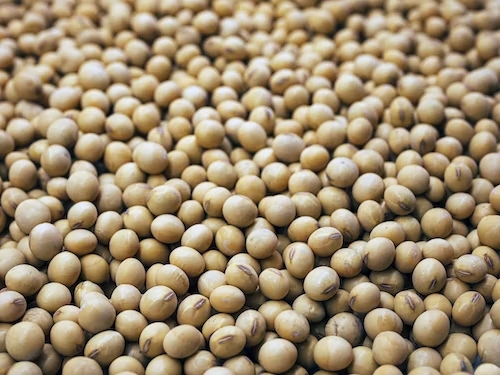Soybean is an East Asian legume low in saturated fats but high in protein, vitamin C, and folate. Iron, fiber, calcium, magnesium, potassium, phosphorus, and omega-3 fatty acids are all found in it. Its nutrient content provides various health benefits, such as lowering blood cholesterol, increasing bone density, and lowering the risk of developing cancer. It is widely used as a meat substitute in various dishes and in various vegan-friendly food products. The growing demand for plant-based foods propels the global soy food market forward.
This post will look at the industry trend analysis of the global soy food market.
Table of Contents
Overview of The Global Soy Food Market

According to market research analysts, the international soy market grew at a CAGR of around 7% in 2021. People are changing their diets and adopting healthier lifestyles in response to rising health concerns. Because it contains all three macronutrients, essential amino acids, and several minerals, soy is widely used as a substitute for animal protein due to its high nutritional value and best amino and protein profile.
Furthermore, soy consumption has cosmetic benefits because it moisturizes the skin, contains anti-aging properties, and restores hair shine. Soy is also well-known for its ability to lower cholesterol, lower hypertension, lower the risk of a few types of cancer, regulate glucose levels in people with diabetes, increase bone density, and promote weight loss. Such health benefits increase the global consumption of soy foods, fueling the market growth.
Throughout the forecast period, APAC was the largest revenue contributor to the soy food market. This is mostly due to an increase in demand for soy food and products such as soymilk and soy sauce in countries such as China and India. Furthermore, economic growth and increased awareness of the health benefits of soy food and beverage products drive demand for soy foods in this region.
Increasing Demand for Soy-Based Food Products
The growing popularity of ethnic cuisines and the sophistication of taste buds present opportunities for soybean products to lead food innovation while also improving human nutrition.
Opportunities exist because soybeans are an important source of vegetable oil and protein in the human diet. Soybeans have a nutritional composition of 38% protein, 18% oil, 35% carbohydrates, and 5% minerals.
Soybeans are important in food research because soybean protein has unique chemical and physical properties that make it ideal for improving food texture, appearance, nutrition, and processing ability. On the other hand, soy ingredients present unique opportunities for new food formulations. A bland flavor allows it to be used in various products. While using the unprocessed bean poses several challenges for American taste buds, refined ingredients such as protein concentrates and protein isolates have potential applications in conventional foods.
There is a growing trend among health-conscious people worldwide to consume healthy snacks. Because of the high amount of plant proteins, lack of cholesterol, and a lower percentage of saturated fats in soy-based food products, the demographic base is shifting its preference toward consuming soy-based goods. As a result of this situation, many soy food products, including soy yogurt, natto, soy sauce, miso, tempeh, soy cheese, tuba, soynut butter, and soy mayonnaise, are in high demand. As a result, significant opportunities for the global market for soy food items are expected to emerge in the coming years.
Market Analysis of Soy Products Market
According to Market Research, the global soy products market will grow at a CAGR of 5.70% between 2021 and 2028. Growth and expansion of the food and beverage industry, rising consumer awareness of high-quality nutritional products, growing research and development capabilities of major manufacturers, and increasing personal disposable income by major companies are the major factors driving the growth of the soy products market.
Additionally, rising personal disposable income and rising consumption of soy-flavored milk, particularly in developing economies, are driving the growth of the soy products market. Other important factors influencing soy product market growth include changing lifestyles, westernization, the rising prevalence of lactose intolerance, and an ever-increasing global population. Improving distribution channels, manufacturers’ increased focus on providing innovative products, low soy product prices, and changing consumer tastes and preferences will contribute to further growth in the soy products market value. Furthermore, rising demand for plant-based food products and an increasing vegan population will pave the way for the growth of the soy products market.
However, artificial calcium in soy products will significantly challenge the market’s growth.
This soy products market report includes information on new recent developments, trade regulations, import-export analysis, production analysis, value chain optimization, market share, the impact of domestic and localized market players, opportunities in terms of emerging revenue pockets, changes in market regulations, market size, category market growths, application niches and dominance, product approvals, product launches, geographic breakdown, and more.
Soy Products Market Country Level Analysis
As previously stated, the soy products market is examined, and market size and volume data are provided by country, product type, category, distribution channel, and end user.
The nations included in the market report for soy products are the United States, Canada, and Mexico in North America, Germany, Sweden, Poland, Denmark, Italy, the United Kingdom, France, Spain, the Netherlands, Belgium, Switzerland, Turkey, Russia, and the Rest of Europe in Europe, Japan, India, South Korea, China, New Zealand, Vietnam, Australia, Malaysia, Thailand, Indonesia, Singapore, Philippines, and the Rest of Asia-Pacific (APAC) in Asia-Pacific (APAC), Brazil, Argentina, and the Rest of (MEA).
The Asia-Pacific region dominates the soy products market and will continue to do so during the forecast period due to rising consumer demand for soy products, growth and expansion of the food and beverage industry, globalization, westernization, changing lifestyles, and rising personal disposable income. Individual market-impacting factors and modifications to domestic market regulations that impact current and future market trends are also included in the country section of the soy products market report.
Consumption volumes, production sites and volumes, import-export analysis, price trend analysis, raw material costs, and downstream and upstream value chain analysis are some of the major indicators used to forecast the market scenario for individual countries. Additionally, the presence and availability of global brands and the challenges they face due to large or scarce competition from local and domestic brands are considered when providing forecast analysis of country data.
Bottomline
Projections are based on critical long-term assumptions for domestic and international macroeconomic conditions, domestic and international agricultural and trade policies, and agricultural productivity growth rates globally.
Provisions of current law are presumed to continue to apply for the duration of the baseline projection period. The projections assume that shocks will impact neither the global agricultural supply nor demand.
The projections provide a neutral reference scenario for discussing alternative farm-sector outcomes that could result from different domestic or international assumptions.
